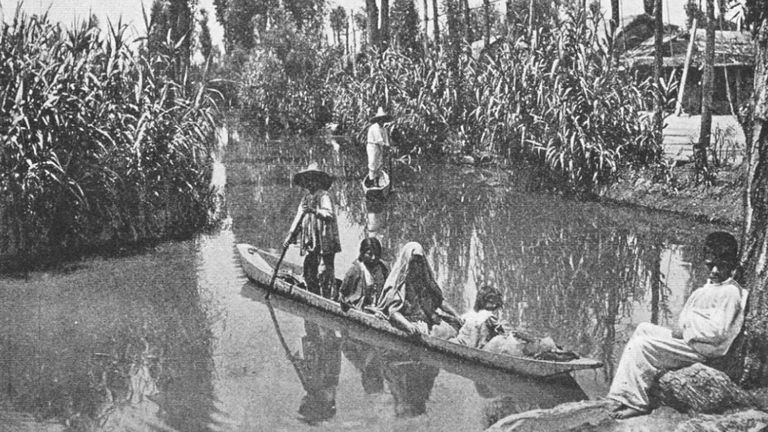Ancient Tribe’s ‘Floating Farms’ Were Way Ahead Of Their Time
Unfortunately mention of the Aztecs is all too likely to make us think of human sacrifice, but that does a grave injustice to this ancient civilization. There’s much more to the story of the Aztecs than their well-attested sacrificial rites. Take agriculture: it turns out that hundreds of years ago the Aztecs perfected one of the most efficient crop-growing methods history has ever seen. And people studying this today are realizing that there are lessons to be learned from the Aztec ways.
Aztec origins
To better understand how the Aztecs came to develop their astonishingly productive and ecologically sound agricultural system, let’s find out a little more about this lost Central American civilization. The origins of the Aztecs are not entirely clear.
But historians believe that they probably migrated from a place called Aztlán in what is now north-west Mexico, moving southwards into central Mexico. The name Aztec is derived from Aztlán, a place whose precise location has been lost to history.
An eagle, a cactus, and a snake
Some researchers think that the chaos that followed the collapse of an earlier civilization, the Toltecs, may have triggered this migration south. Aztec legend had it that they made this move at the demand of their god Huitzilopochtli.
Huitzilopochtli told the Aztecs, or the Mexica as they called themselves, to look out for a special sign as they migrated. They were to hunt for a cactus with a giant eagle perched on it: the bird would be eating a snake
Tenochtitlan
Improbable as it might seem, Aztec lore records that they did indeed come across an eagle, a cactus, and a snake: cynics among you might suggest the stories were adapted afterwards to fit the facts! In any case, they chose this spot, Lake Texcoco, to settle; in around 1325 they founded what would become the great city of Tenochtitlan on the site of modern-day Mexico City.
But the land there was starkly different in its geography 800 years ago compared to now: the terrain consisted of five interconnected lakes. This waterlogged land was to present the Aztecs with some difficult challenges.
Not enough land
At first the Aztecs only occupied a couple of small islands in Lake Texcoco. That was fine during the initial phase of settlement but as the Aztec population grew, so new problems emerged. The principal headache was the amount of land available in this marshy environment.
There just wasn’t enough of it: there were just the five large lakes dotted with marshy islands. And one of the major problems arising from this dearth of dry land was agricultural in nature.

